Beekeeping
A Honey of a Business
As Sue Monk-Kidd wrote in The Secret Life of Bees, “Most people don’t have any idea about all the complicated life going on inside a hive. Bees have a secret life we don’t know.”
Whether they fascinate or terrify you, there is no denying that bees are a curious and misunderstood creature. We watch them bounce and float among the flowers and then hasten to their hives. While they may seem mysterious, calm beekeepers who watch over them get occasional glimpses into their secret life.

While honeybees aren’t native to Montana, our state is usually in one of the top five honey-producing states in the nation. According to a 2013 Department of Agriculture survey, Montana ranked second with nearly 15 million pounds of honey produced that year. All of this sticky sweetness stems from the approximately 5,532 current beekeeper sites and 188,026 colonies scattered about those sites, explains Cam Lay, natural resources section program manager for the Department of Agriculture. Lay also verified that there are about currently 158 registered beekeepers and 107 registered hobbyists.
Montana’s beekeeping has primarily been an agricultural activity, but increasing numbers of hobbyists are taking up the practice on a smaller scale. Whether it’s fascination with bees, being in tune with nature, craving that sweet nectar, or wanting to increase pollination, more and more people are taking up beekeeping. They say if you ask 10 beekeepers a question you’ll likely get at least 16 different answers, but here are a few do’s and don’ts of the business to get you started.
DO’S:
1. Get educated
Don’t overwhelm yourself but invest time in gaining a solid knowledge foundation. Join a bee club in your area so you establish a support system to help you. Pick up a good beginner’s book, such as 1st Lessons in Beekeeping by Dr. Keith Delaplane. The University of Montana also offers online beekeeping certification courses through its School of Extended and Lifelong Learning.
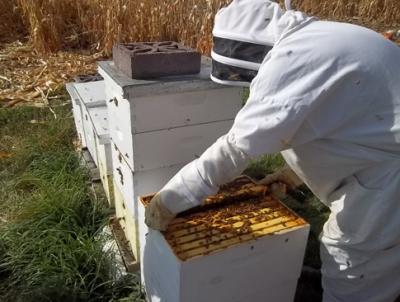
2. Wear the right clothing
This is especially important if you are a first-year beekeeper. Always wear a veil for your face and gloves to protect you from stings. A full suit may be a beginner’s best option and are available for purchase online and through bee keeping organizations. The average cost for a suit can range from about $65-$125. Otherwise, wear thick clothes with long sleeves and pants. Tuck your pants into your socks and your shirtsleeves into your gloves to avoid bees sneaking up places. Also, stick with white or light-colored clothing. Bold, darker colors like red and black resemble natural predators and are more likely to provoke the bees to become aggressive around you.
3. Scout out the best location for your hives
While there is no simple formula on this, Rick Molenda, general manager and president of Western Bee Supplies Inc. in Polson, offers some suggestions. Pick a spot with full sun coverage. Like an alarm clock, the sun will motivate the bees to get up early so they can get in a full day’s work. Make sure the hives are out of the wind. This avoids the cold western or northerly winds from blowing hard against the hives and possibly tipping them over. Have convenient access to the hives. A full box of honey can weigh up to 100 pounds — you don’t want to be toting that or several five gallon buckets of syrup to feed the hives back and forth any distance. Pick a safe location. Bees take the quickest path from their food source to the hive so make sure their flight path will not disturb or pose a threat to neighbors, livestock, or family.

4. Buy the right equipment
Besides the hives, there are two indispensable items you need. First is a smoker. It is used to puff smoke into the hive entrance before opening and over the frames once opened. Smoke causes bees to gorge themselves with honey which makes them calmer. Second is a hive tool, which is used like a lever to pry apart boxes and lift frames out for inspection.
5. Join a local beekeeper club
This is one of the best ways to learn more about bees and beekeeping. You will have the invaluable opportunity to meet other experienced beekeepers that you can exchange ideas and opinions with. Associations also host classes and annual conferences that offer educational and networking opportunities. Visit the Montana Beekeepers Association’s Web site at www.montanastatebeekeepers.wordpress.com to learn about the different clubs in your area that you can join.
DONT’S:
1. Don’t try tackling it alone
Reading books and online research is helpful but since many bee challenges are regional, having a good relationship with experienced local beekeepers can be a huge asset in the beginning. Whether you join a local beekeeping club or contact someone from your local county extension office, there are plenty of people to lean on.
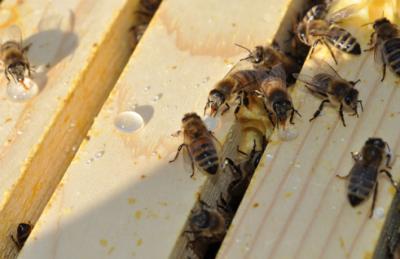
2. Not feeding the bees enough
In a perfect world, bees would always gather enough stores to feed themselves. But in early spring, before pollen or nectar are available or other times of the year when these items are scarce, consider supplemental feeding. It may help ensure the colony’s survival. In the spring, feed the bees a mixture of sugar and water in a one to one ratio. Use two parts sugar and one part water mixture in the fall if the bees don’t have adequate winter stores. You can also make a sugar candy to put in the hives by taking boiled water and sugar and placing it in candy molds.

3. Not checking on your bees
In the summer months, beekeepers need to carry out weekly inspections. This is critical to controlling the swarm impulse, avoiding overcrowding, making sure the colonies have young, prolific queens, that they are kept disease free, and to ensure that Varroa mite populations on kept down to manageable levels with appropriate medicines and pest management systems. Since illnesses like Foul Brood disease are serious and must be reported, being able to recognize symptoms of an unhealthy hive is important.
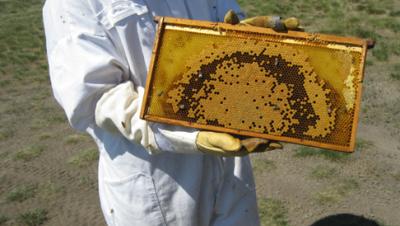
4. Don’t get your bees just anywhere
Bees can be obtained a variety of ways, including capturing swarms in the wild (not recommended for beginners) or purchasing them in packages or nucleus hives. Nucleus colonies are miniature hives containing 4-6 frames of bees (versus the normal 8-10), a brood and a queen. They are picked up from suppliers. Packaged bees are sold by the pound in a shoe box-size wood and screen cage that also contains a mated queen. You can order these at specific times of the year from local beekeepers and clubs, but order early! There are pros and cons to each so do your research on each method as well as the suppliers you might purchase from.

5. Don’t give up
If you are rewarded with a honey crop your first year, pat yourself on the back. But keeping the bees healthy and helping them build up enough winter stores to get through that first cold season should be your first goals. If your hive dies or swarms, don’t become discouraged and quit. If this happens, just remember that every year of beekeeping delivers a wealth of skills and information for next year. You will have the time to evaluate why your hive died and what you can try or do better on next year.
More advice from Melissa Picoli, owner of Kettle Care Organics,
Whitefish, on how to enhance the well-being of bees just by planting some of their favorite flowers:
• Bees love botanicals — borage, mints, basil, sage, thyme, oregano, lavender, chives,
berries, dandelions, calendula, and geranium. These all grow easily in Montana.
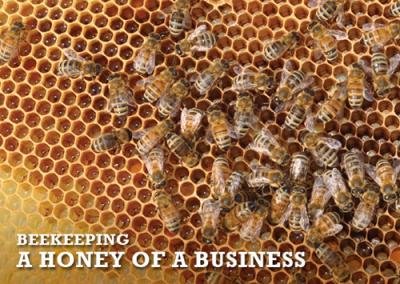
• Use non-GMO plants and avoid chemical fertilizers and insecticides. To feed your herbs and flowers, try keeping eggshells, coffee grounds and plant-based organic matter in a bucket throughout the week. Fill with water about two hours before using and then mix with plain water to feed plants.
• Group plants together to attract the most bees. About a square foot of each type bunched together is both beautiful and compelling for a hungry bee.
• Allow your herbs to flower. You can plant one for yourself, and one that you’ll allow to flower for the bees. At the end of the season, allow plants like broccoli and cauliflower to flower fully. These become crucial food sources when other flowers are done blooming.
*For trivia about honey go to http://www.honey.com/newsroom/honey-trivia/






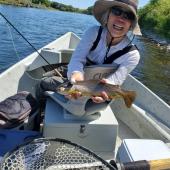

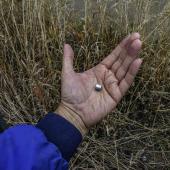

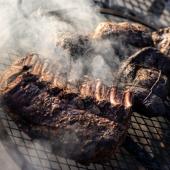

Leave a Comment Here